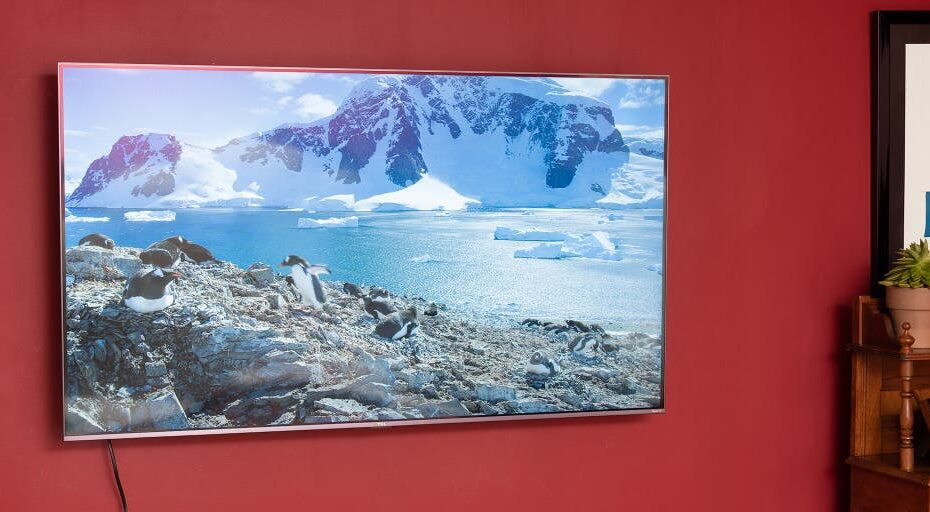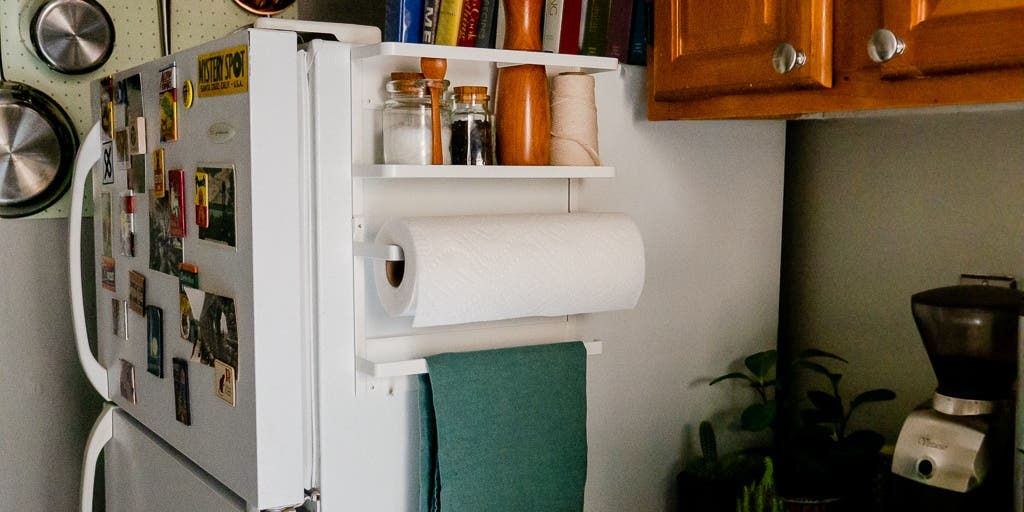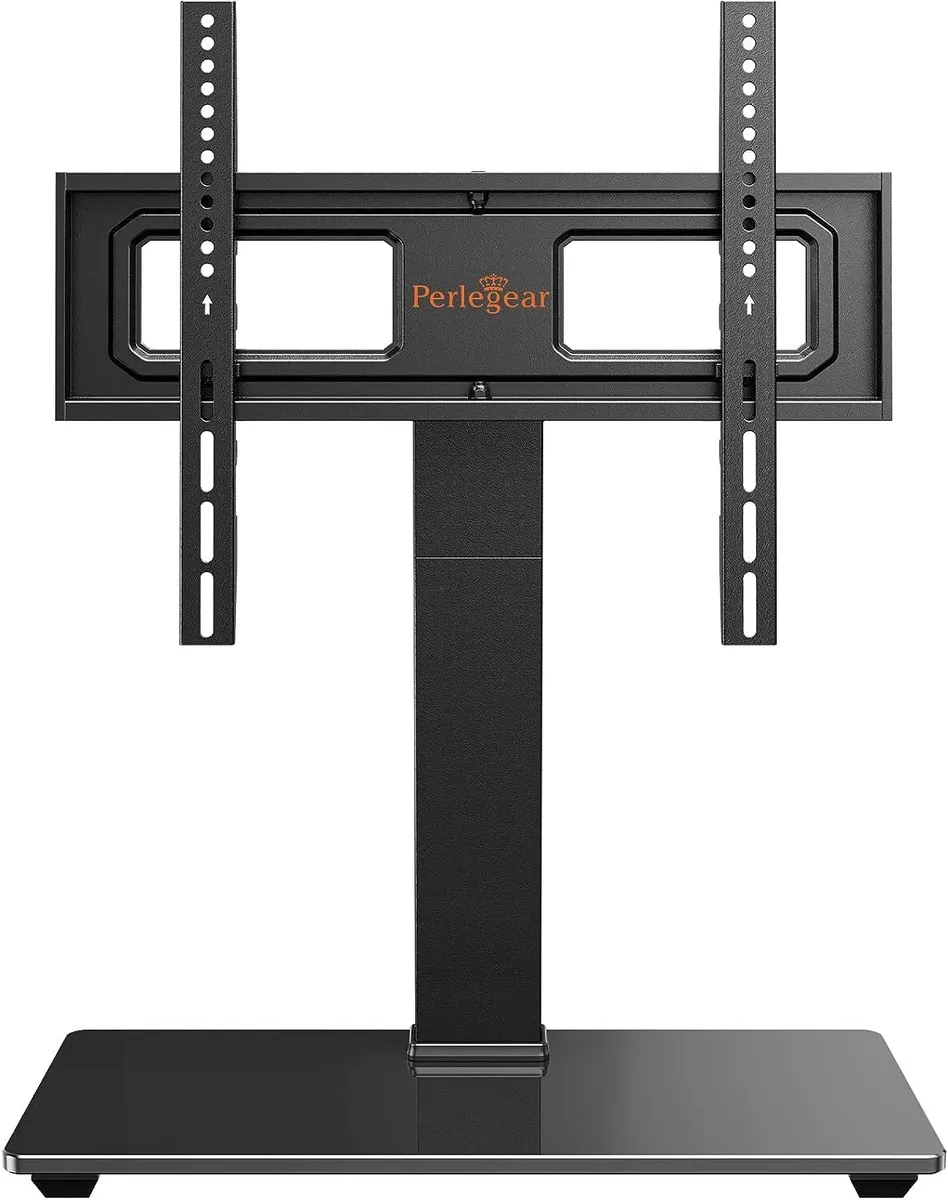Plywood is the best backing for mounting a TV wall mount, providing additional support and flexibility for hanging shelves or other items. It can be installed behind drywall to create a surface for mounting anywhere, not just on studs.
This method allows for a secure and stable TV installation. Additionally, plywood can be reinforced to ensure proper alignment and centering of the TV mount on the wall.
Why Plywood Is The Best Backing For Tv Mounting
Plywood is the ideal backing for TV mounting because it offers additional support and flexibility for hanging shelves or other items. It can be installed behind drywall to create a sturdy surface for mounting the TV, providing peace of mind and a secure installation.
Advantages Of Using Plywood For Tv Mounting
The Right Type Of Plywood For Tv Mounting
Benefits Of Plywood Backing For Tv Mounting
Why Plywood is the Best Backing for TV Mounting
Plywood is the ideal material for creating a solid backing for TV mounting. It offers several advantages over other materials that make it the top choice for this application. When it comes to ensuring the stability and safety of your TV mount, using plywood is a smart and practical choice.Advantages of Using Plywood for TV Mounting
1. Strength and Durability: Plywood is constructed by layering thin wood veneers, which gives it incredible strength and durability. It can easily withstand the weight of a TV and provides a sturdy surface for mounting brackets. 2. Flexibility: Plywood is available in various thicknesses, allowing you to choose the right size for your TV and the desired level of support. The flexibility of plywood also allows for easy cutting and customization to fit any wall size or shape. 3. Moisture Resistance: Unlike other wood materials, plywood has excellent moisture resistance, making it less prone to warping or damage caused by humidity. This feature ensures that your TV mount remains stable and secure over time. 4. Easy Installation: Plywood is lightweight and easy to work with, making the installation process quick and hassle-free. It can be easily attached to studs or walls using screws or nails. 5. Cost-Effective: Plywood is a cost-effective option compared to other materials commonly used for TV mounting backings. It offers a great balance between affordability and performance, making it a practical choice for consumers.The Right Type of Plywood for TV Mounting
When selecting plywood for TV mounting, it’s crucial to choose the right type to ensure optimal performance. Here are a few essential factors to consider: 1. Thickness: The thickness of plywood directly affects its strength and stability. It’s recommended to use plywood with a thickness of at least 3/4 inch to provide adequate support for the TV mount. 2. Grade: Plywood is available in different grades, such as A, B, C, and D, based on the appearance of the veneer. For TV mounting, it’s best to choose plywood with a higher grade that has smoother and more uniform veneers. 3. Edge Treatment: Plywood with edges that are sealed or finished helps prevent moisture penetration and adds to the overall durability of the backing.Benefits of Plywood Backing for TV Mounting
Using plywood as the backing for TV mounting offers numerous benefits that enhance the overall TV-watching experience: 1. Stability: Plywood provides a solid and stable base for the TV mount, minimizing the risk of any movement or wobbling. 2. Concealed Wiring: The extra depth and space behind the plywood backing allow for easy hiding of wires and cables, giving your TV setup a clean and organized appearance. 3. Easy Maintenance: Plywood is easy to clean and maintain, allowing you to keep your TV mount area looking fresh and tidy. 4. Versatility: Plywood can be easily painted or stained to match any interior décor, giving you the flexibility to customize the appearance of your TV mounting area. In conclusion, plywood stands out as the best material for creating a secure and stable backing for TV mounting. Its strength, durability, moisture resistance, and cost-effectiveness make it the top choice among homeowners and DIY enthusiasts alike. So, if you are looking for a reliable and long-lasting solution, consider using plywood for your next TV mounting project.How To Install Plywood Backing For Tv Mounting
Installing plywood backing for TV mounting is a crucial step in ensuring a secure and stable installation. While drywall alone may not be strong enough to support the weight of a TV, adding plywood backing provides an extra layer of reinforcement. In this guide, we will walk you through the proper method of installing plywood backing for TV mounting, as well as provide tips for ensuring a secure installation.
Preparing The Wall For Plywood Backing
Before installing plywood backing, it is important to properly prepare the wall. Here are the steps to follow:
- Locate the studs on the wall using a stud finder.
- Measure and mark the desired location for the TV mount.
- Cut the plywood to the appropriate size, ensuring it extends beyond the edges of the TV mount.
- Position the plywood against the wall, aligning it with the marked location.
- Using a drill, screw the plywood into the studs, ensuring a secure attachment.
By following these steps, you will create a sturdy base for mounting your TV.
Proper Method Of Mounting Plywood Backing
Once the wall is prepared, it’s time to mount the plywood backing. Here is the proper method:
- Place the TV mount onto the plywood, aligning it with the pre-drilled holes.
- Secure the TV mount to the plywood using the provided screws or bolts, following the manufacturer’s instructions.
- Ensure all connections are tight and secure.
Mounting the plywood backing correctly is essential for a safe and reliable TV installation.
Tips For Ensuring Secure Installation Of Plywood Backing
To ensure a secure installation of plywood backing for TV mounting, consider the following tips:
- Use plywood that is at least 3/4 inch thick to provide sufficient strength and support.
- Make sure the screws or bolts used to attach the plywood to the wall studs are of the appropriate size and length.
- Double-check the alignment and levelness of the plywood before mounting the TV.
- Verify that the TV mount is compatible with the plywood backing and can support the weight of your TV.
- Consider consulting a professional if you are unsure about the installation process.
By following these tips, you can ensure a secure and stable installation of plywood backing for TV mounting.
Common Mistakes To Avoid When Mounting A Tv On Plywood Backing
Avoid these common mistakes when mounting a TV on plywood backing to ensure a secure installation. Use the correct size and pressure for the mounting bolts, avoid using too much torque, tighten the mounting hardware properly, and don’t rely on a cheap stud finder.
Also, be cautious when drilling into masonry and opening the mount.
If you’re planning to mount your TV on plywood backing, it’s important to avoid common mistakes that can lead to potential damage or accidents. By understanding and avoiding these pitfalls, you can ensure a safe and secure installation. Let’s take a closer look at some of the most common mistakes to avoid:
Using Incorrect Mounting Bolts
One of the key mistakes people make when mounting a TV on plywood backing is using incorrect mounting bolts. It’s crucial to use bolts that are specifically designed for the weight and size of your TV. Make sure to check the manufacturer’s recommendations and guidelines for the appropriate bolt size and weight capacity. Using bolts that are too small or too long can compromise the stability of your mount and pose a risk to your TV. Always double-check the specifications and choose the right bolts for a secure installation.
Applying Too Much Torque
Another common mistake is applying too much torque when tightening the mounting bolts. While it’s important to ensure a secure fit, over-tightening can lead to damage. Applying excessive force can strip the threads or crack the plywood backing. To prevent this, use a torque wrench or a power drill with a torque-limiting feature. This will allow you to tighten the bolts to the appropriate level without exceeding the recommended torque.
Tightening Mounting Hardware
When mounting a TV on plywood backing, it’s crucial to pay attention to the tightness of the mounting hardware. It’s important to tighten the bolts securely to ensure stability and prevent accidental dislodging. However, be cautious not to overtighten, as it can damage the plywood or put unnecessary stress on the mount. Always follow the manufacturer’s instructions for properly securing the mounting hardware.
Proper Handling Of Flip Toggles
Flip toggles are often used to secure the plywood backing to the wall. However, mishandling them can create problems. Avoid the mistake of forcing the toggles open or closing them too tightly. This can cause the toggles to malfunction or damage the plywood surface. Follow the instructions provided with the flip toggles and handle them carefully to ensure a reliable and secure installation.
Avoiding The Use Of Cheap Stud Finder
One mistake that many people make is relying on cheap or low-quality stud finders when locating studs in the plywood backing. A stud finder is essential for finding the right spots to secure the mounting hardware. Investing in a reliable and accurate stud finder will ensure that you locate the studs correctly and have a solid foundation for your TV mount. Avoid the frustration and potential risks by using a high-quality stud finder.
Drilling Into Masonry
Drilling into masonry may be necessary when mounting a TV on plywood backing. However, drilling in the wrong location or using incorrect methods can cause irreversible damage. To avoid this mistake, make sure to use the appropriate drill bit for masonry and follow the instructions carefully. Take your time and be precise when drilling into masonry to ensure a secure and accurate installation.
Marking The Location On The Wall
Lastly, marking the location on the wall is a crucial step for a successful TV mount. Accurate marking will help you align the plywood backing and mounting hardware correctly. Use a level and measuring tape to mark the desired location and double-check for accuracy. Take your time to ensure precise measurements and markings, as this will greatly impact the stability and alignment of your TV mount.
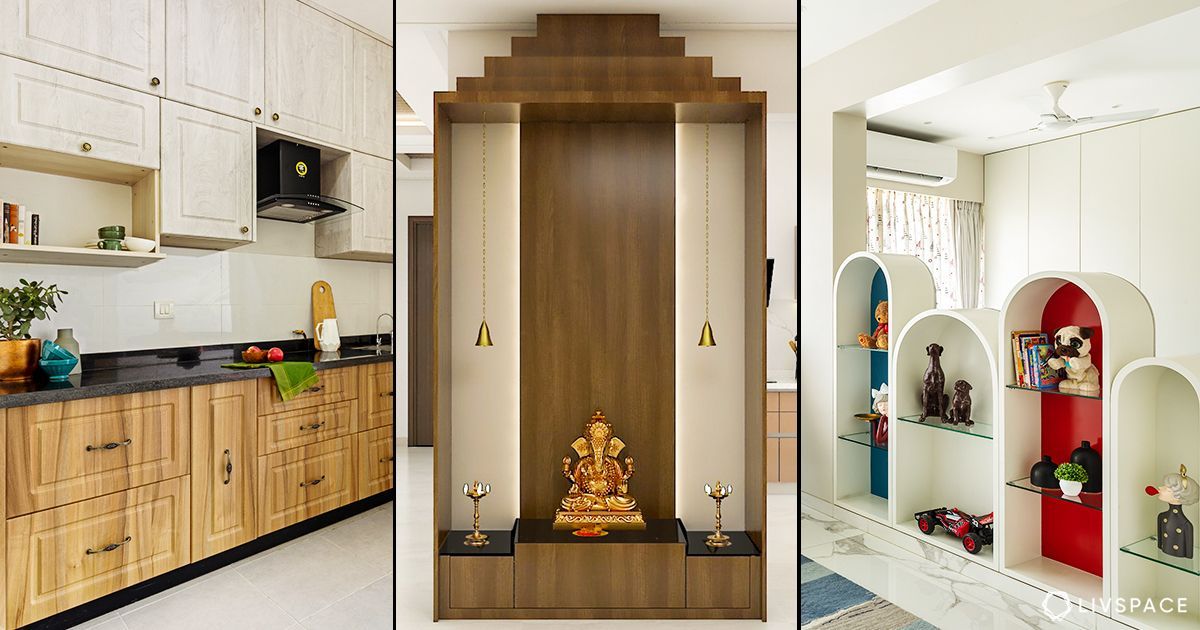
Credit: www.livspace.com
Additional Uses And Benefits Of Plywood Backing
Plywood backing is not just limited to providing a sturdy surface for mounting a TV. It has several other uses and benefits that make it a versatile choice for various home improvement projects. Whether you’re looking to install shelves, enhance wall protection, or explore alternative uses, here’s how plywood backing can serve you:
Installing Shelves With Plywood Backing
Plywood backing offers a practical solution for installing shelves anywhere, not just on the studs. By installing plywood behind drywall, you create a strong and secure surface that can support the weight of shelves and other items. This method provides additional support and flexibility, allowing you to hang shelves in any desired location.
Enhancing Wall Protection With Plywood Backing
When it comes to protecting your walls, plywood backing can be a game-changer. By affixing a high-quality piece of plywood to the wall, through the studs, you create a durable barrier that can withstand impact and prevent damage. This is especially useful in areas prone to scuffs, scratches, or accidental bumps, such as hallways, playrooms, or high-traffic areas.
Alternative Uses Of Plywood Backing
Plywood backing has a wide range of alternative uses beyond TV mounts and shelves. Consider these creative applications:
- Creating a backer board for hanging artwork or mirrors.
- Building a customized headboard for your bed.
- Constructing a sturdy desk or workbench.
- Designing a floating bookshelf or display unit.
- Building a creative room divider or accent wall.
With its strength, versatility, and affordability, plywood backing opens up a world of possibilities for DIY enthusiasts and homeowners alike. Let your creativity soar by exploring the many uses of this reliable building material.
Choosing The Right Thickness And Type Of Plywood For Blocking
When choosing the right thickness and type of plywood for blocking, it’s important to consider plywood backing for TV mounts. Plywood can provide additional support and flexibility for hanging shelves or mounting items, ensuring a secure and sturdy installation.
Determining The Thickness Of Plywood For Blocking
When choosing the right thickness of plywood for blocking, it is essential to consider the weight and size of the TV you plan to mount. A thicker plywood will provide more stability and support for heavier TVs.
Typically, a 3/4-inch plywood is recommended for blocking. This thickness ensures that the plywood is strong enough to withstand the weight of the TV and securely hold the mounting brackets. However, if you have a smaller or lighter TV, you may opt for a 1/2-inch plywood.
Blocking For Kitchen Cabinets
Blocking for kitchen cabinets serves a similar purpose as blocking for TV mounts. It provides additional support and stability to ensure that cabinets are securely mounted to the wall.
When it comes to blocking for kitchen cabinets, the thickness requirements may vary. In most cases, a 1/2-inch to 3/4-inch plywood is sufficient. However, if you have particularly heavy cabinets or plan to store heavy items in them, you may want to opt for a thicker plywood, such as 1-inch.
It’s important to note that blocking should be installed at the same height and depth as the cabinets to ensure proper alignment and support.
Using Osb Board For Tv Mounting
While plywood is a popular choice for blocking, some people may wonder if OSB (oriented strand board) can be used instead. OSB is a type of engineered wood that consists of compressed wood strands.
Using OSB board for TV mounting is a viable option. It is strong and sturdy, making it suitable for supporting the weight of a TV. The thickness of the OSB board will depend on the size and weight of the TV, similar to plywood.
Before installing OSB board, it’s important to ensure that it is properly secured to the wall studs. This will provide the necessary support for the TV mount and prevent any potential accidents.
In conclusion, when choosing the right thickness and type of plywood or OSB for blocking, it’s crucial to consider the weight and size of the TV or cabinets. A thicker plywood, such as 3/4-inch, is generally recommended for TV mounts, while a 1/2-inch to 3/4-inch plywood is suitable for kitchen cabinets. OSB board can also be used for TV mounting as long as it is properly secured to the wall studs.
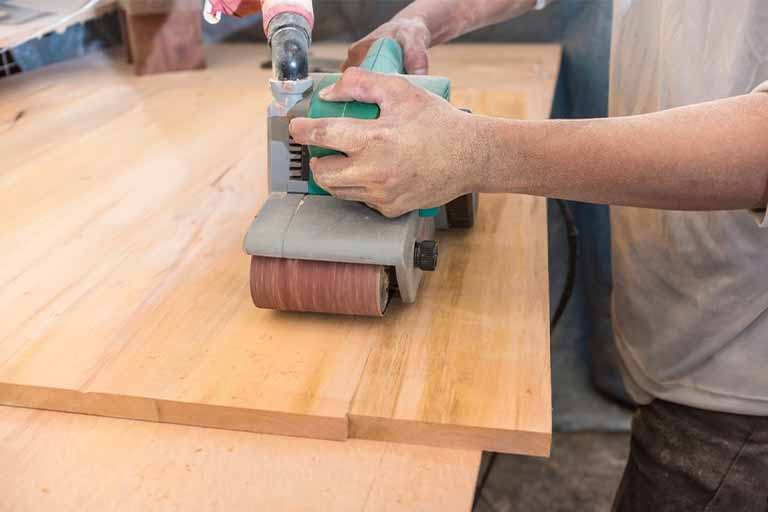
Credit: sfkplywood.com

Credit: www.amazon.com
Frequently Asked Questions On Plywood Backing For Tv Mount
What Thickness Of Plywood For Blocking?
For blocking, the recommended thickness of plywood is typically 3/4 inch. This provides adequate strength and stability to support the weight of a TV mount or other items. Installing plywood behind drywall can offer additional support for hanging shelves or other objects.
Can You Hang A Tv On Osb Board?
Yes, you can hang a TV on an OSB board. OSB boards can provide a sturdy surface for mounting a TV, offering support and stability. Make sure to use appropriate mounting hardware and follow the manufacturer’s instructions for proper installation.
Can You Mount Shelves On Plywood?
Yes, you can mount shelves on plywood. Installing plywood behind drywall can provide additional support and flexibility for hanging shelves or other items. It creates a surface for hanging shelves anywhere, not just on the studs.
What Do I Put Under A Mounted Tv?
To properly support a mounted TV, you can put plywood backing behind it. This provides a solid surface for mounting and ensures stability. You can also use plywood to create a surface for hanging shelves or other items. It is important to affix the plywood to the wall through the studs for added support.
Conclusion
Plywood is the best choice for mounting a TV. It provides additional support and flexibility for hanging shelves or other items, not just on the studs. By installing plywood behind drywall, you can create a surface that is sturdy enough to hold the weight of the TV mount.
This method ensures that your TV is securely mounted and avoids any risks or damages. Consider using plywood backing for your TV mount to enhance stability and peace of mind.
- Unleash the Potential: Exploring the World of Ceiling TV Mounts - February 15, 2024
- How to Mount a Tv on a Swivel Stand - February 15, 2024
- How to Hang Tv Outside - February 14, 2024
